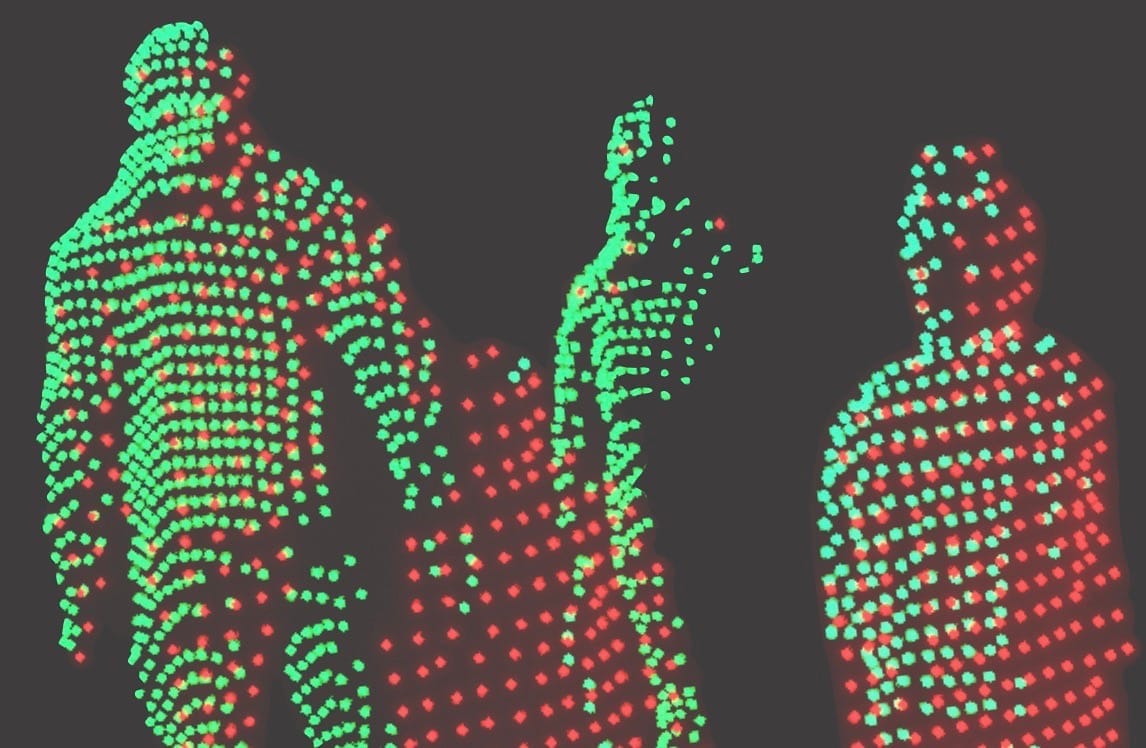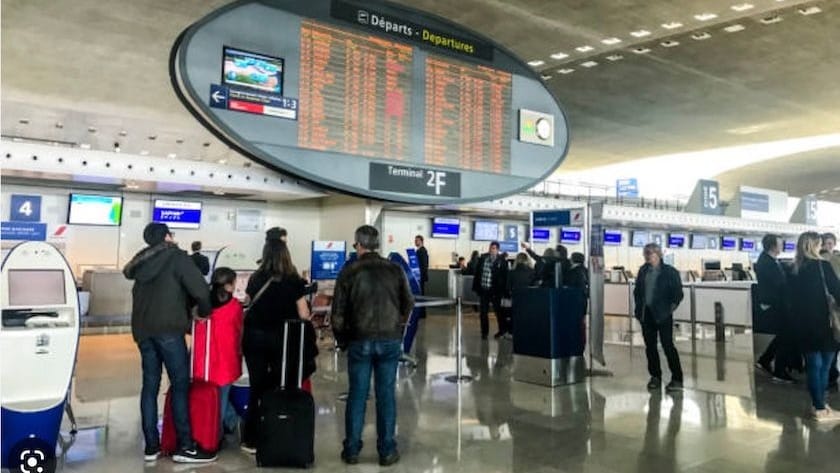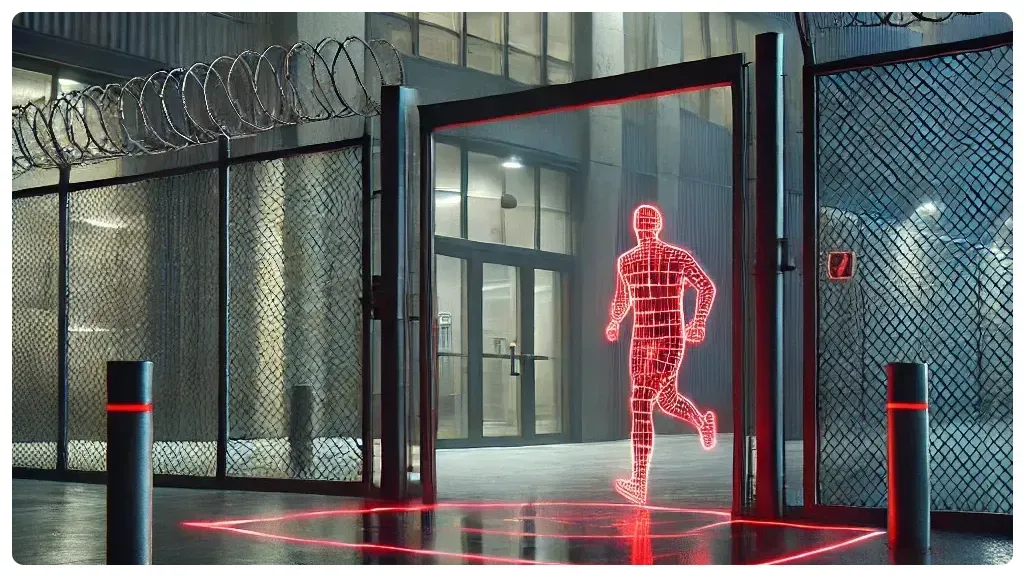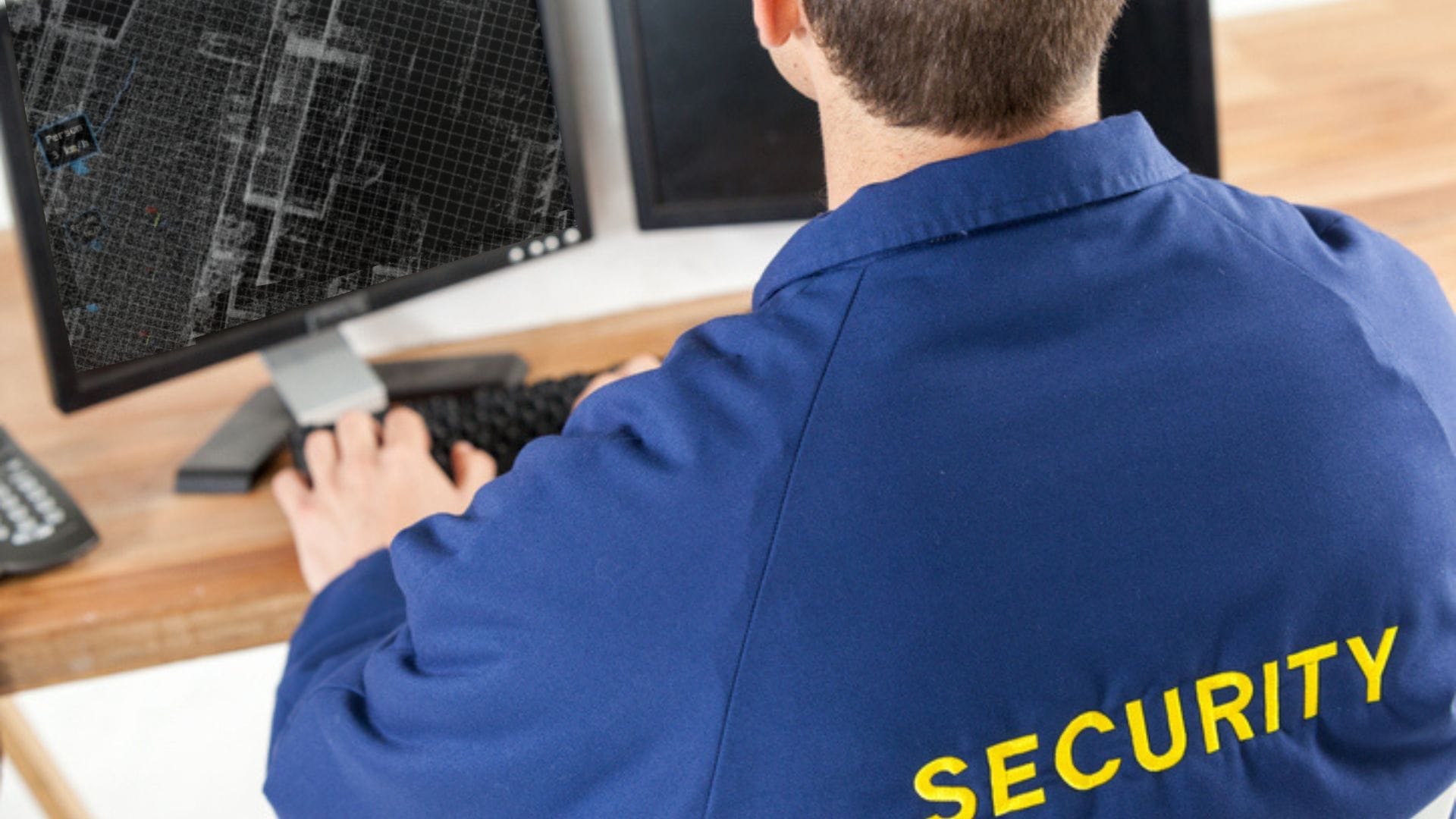
Transforming Venue Management: How Physical AI and LiDAR Enhance Crowd Analytics
LiDAR and Physical AI transform venue management with real-time crowd analytics, enhancing safety, efficiency, and visitor experience while protecting privacy.
Table of Contents
- Understanding Physical AI in Venue Management
- The Evolution of Crowd Monitoring Technologies
- LiDAR: The Game-Changing Technology for Crowd Analytics
- Implementing Physical AI Solutions in Venues
- Enhancing Visitor Experience Through Data-Driven Insights
- Optimizing Operational Efficiency with Real-Time Analytics
- Security Enhancements Through Advanced Crowd Monitoring
- Forecasting and Predictive Analytics for Venue Management
- Privacy Considerations in Modern Crowd Analytics
- Future Directions for Venue Intelligence Systems
Introduction
The management of large venues—from sports stadiums and concert halls to airports and shopping centers—has traditionally relied on manual observation, historical data, and reactive decision-making. Today, the integration of Physical AI and advanced sensing technologies is fundamentally changing how venues understand, manage, and optimize the movement of people within their spaces. This shift represents more than a technological upgrade; it's a complete reimagining of how venues can operate with greater intelligence and responsiveness.
Physical AI refers to the combination of artificial intelligence with physical sensing technologies that can perceive and interpret the real world. When applied to venue management, these systems create a digital representation of physical spaces and the people moving through them, enabling unprecedented insights into crowd behavior, flow patterns, and space utilization.
As venues face increasing pressure to deliver exceptional experiences while managing costs and ensuring safety, these intelligent systems offer a compelling solution. They transform raw data about crowd movement into actionable intelligence that can help venue operators make informed decisions about staffing, space allocation, security deployment, and visitor services.

This article explores how venues can leverage Physical AI and LiDAR technology to revolutionize their approach to crowd analytics, creating smarter, safer, and more responsive environments for visitors while optimizing operational performance and resource allocation.
Understanding Physical AI in Venue Management
Physical AI represents the convergence of artificial intelligence algorithms with sensors that can detect, measure, and interpret physical phenomena in the real world. In venue management, this technology creates a bridge between the physical space where people gather and digital systems that can analyze their movement and behavior patterns. Unlike traditional approaches that rely on historical data or manual observation, Physical AI delivers continuous, objective measurements of what's actually happening in a venue.
The core components of a Physical AI system for venues typically include sensors for data collection, processing units for analysis, and interfaces that translate insights into actionable information for venue operators. These systems can track metrics such as occupancy levels, crowd density, movement patterns, dwell times, and queue lengths—all valuable data points for venue optimization.
What makes Physical AI particularly powerful is its ability to process information in real time, allowing venue managers to respond immediately to changing conditions. For example, if a particular area becomes overcrowded, the system can alert staff to open additional entrances or redirect visitors to less congested spaces. This real-time responsiveness represents a significant advancement over traditional methods that might only identify such issues after they've become problems.
The application of Physical AI in venues extends beyond simple counting or tracking. Advanced systems can identify patterns and anomalies, segment different types of visitor behaviors, and even predict future conditions based on current data and historical trends. This depth of analysis enables venue operators to make more nuanced decisions about everything from staffing levels to facility design.
As venues increasingly compete on the quality of experience they provide, Physical AI offers a way to understand and enhance that experience in ways that weren't previously possible. By bringing the precision and analytical power of AI to the physical environment, venue operators can create spaces that are not just functional but truly responsive to the needs and behaviors of the people who use them.
The Evolution of Crowd Monitoring Technologies
The journey toward sophisticated crowd analytics has been marked by several technological leaps, each offering incremental improvements in how venues understand and manage visitor flows. Early approaches relied heavily on manual counting and observation, which were labor-intensive and prone to human error. Security personnel and venue staff would visually estimate crowd sizes and densities, making decisions based on these rough approximations.
The first significant technological advancement came with the introduction of turnstiles and ticket scanners, which provided basic entry and exit counts. While these systems offered more accurate attendance figures, they couldn't provide insights into how people moved within the venue after entry. This limitation meant that internal congestion, underutilized spaces, and flow bottlenecks often went undetected until they became significant problems.
The next wave of innovation brought camera-based systems and computer vision technology. These solutions could track movement throughout a venue, not just at entry points, offering a more comprehensive view of crowd dynamics. However, these systems came with their own limitations—they struggled with occlusion (when people block the camera's view of others), varying lighting conditions, and privacy concerns related to facial recognition.
Wi-Fi and Bluetooth tracking emerged as alternative approaches, using signals from visitors' mobile devices to map movement patterns. While these methods provided useful data on flow and dwell times, they were limited by signal reliability, battery dependency, and the fact that they could only track visitors who had devices with the appropriate settings enabled.
Today, LiDAR (Light Detection and Ranging) technology represents the state of the art in crowd monitoring. By using laser pulses to measure distances and create detailed 3D maps of spaces and the people within them, LiDAR overcomes many of the limitations of previous technologies. It works in any lighting condition, isn't affected by occlusion to the same degree as cameras, and doesn't capture personally identifiable information, addressing many privacy concerns.

Companies like Outsight (https://www.outsight.ai) have been at the forefront of developing LiDAR-based solutions specifically designed for crowd analytics in venues. These systems can anonymously track thousands of individuals simultaneously, providing unprecedented insights into crowd behavior while maintaining privacy and operating in challenging environments where other technologies might fail.
LiDAR: The Game-Changing Technology for Crowd Analytics
LiDAR technology has emerged as the most advanced and capable solution for crowd analytics in venues, offering a unique combination of accuracy, reliability, and privacy that sets it apart from other sensing technologies. At its core, LiDAR works by emitting laser pulses and measuring the time it takes for those pulses to bounce back after hitting objects or people, creating precise 3D representations of spaces and everything in them.
The application of LiDAR to crowd monitoring provides venue operators with exceptional spatial awareness. Unlike 2D camera systems that struggle with perspective and occlusion, LiDAR's 3D sensing capability allows it to accurately track individuals even in dense crowds where people may be partially hidden from view. This capability is particularly valuable in high-traffic venues like stadiums or transportation hubs where traditional monitoring systems often fail during peak periods.
Another significant advantage of LiDAR is its performance consistency across varying environmental conditions. The technology functions with equal precision regardless of lighting conditions—from bright sunlight to complete darkness—making it ideal for venues that operate at different times of day or have varied lighting throughout their spaces. This consistency ensures that crowd analytics remain reliable even as conditions change.
Privacy considerations have become increasingly important in public monitoring systems, and LiDAR offers significant advantages in this regard. Unlike camera-based systems that capture images that could potentially identify individuals, LiDAR creates anonymous point clouds that track movement patterns without recording any biometric or personally identifiable information. This inherent privacy protection makes LiDAR-based systems more acceptable to the public and easier to implement within regulatory frameworks like GDPR.
Companies like Outsight (https://insights.outsight.ai) have developed specialized LiDAR processing software that transforms raw point cloud data into actionable crowd analytics. These systems can distinguish between individuals in a crowd, track movement patterns, measure dwell times, identify queue formation, and detect unusual crowd behaviors—all while maintaining anonymity and privacy.
The precision of LiDAR data also enables more sophisticated analytics than was previously possible. Venue operators can measure not just how many people are in a space, but exactly how they're distributed, how quickly they're moving, which paths they're taking, and how these patterns change over time. This depth of information supports more nuanced operational decisions and more effective space optimization.
Implementing Physical AI Solutions in Venues
The successful implementation of Physical AI and LiDAR technology in venues requires careful planning and a strategic approach that aligns technology deployment with specific operational goals. The first step typically involves conducting a thorough assessment of the venue's layout, existing infrastructure, and key areas where crowd monitoring would provide the most value. This might include entry points, concourses, retail areas, or other high-traffic zones where understanding crowd flow could improve operations.
Hardware installation considerations are crucial for effective implementation. LiDAR sensors must be positioned to maximize coverage while minimizing blind spots, typically mounted at elevated positions that provide clear views of the monitored areas. The number and placement of sensors will depend on the venue's size, layout complexity, and the specific metrics being tracked. Most venues find that a combination of overhead and side-mounted sensors provides the most comprehensive coverage.
Integration with existing venue management systems represents another important implementation consideration. Physical AI solutions are most effective when they can share data with and receive information from other operational systems such as ticketing platforms, security networks, and facility management software. This integration enables more coordinated responses to crowd conditions and more comprehensive analytics that combine multiple data sources.
Staff training and operational adaptation are essential components of successful implementation. The most sophisticated crowd analytics system will provide limited value if venue staff don't understand how to interpret the data or incorporate it into their decision-making. Comprehensive training programs should ensure that all relevant personnel—from security teams to guest services staff—understand the capabilities of the system and how to use its insights effectively.
Companies like Outsight (https://www.outsight.ai) offer end-to-end implementation support, helping venues not just with the technical aspects of system deployment but also with the operational integration and staff training needed to maximize the value of the technology. Their experience working with various venue types provides valuable guidance on implementation best practices and potential pitfalls to avoid.

Phased implementation approaches often prove most successful, starting with pilot deployments in high-priority areas before expanding to full venue coverage. This approach allows venue operators to validate the technology's effectiveness, refine their operational responses, and build internal expertise before scaling up. It also provides opportunities to demonstrate clear ROI from initial deployments, which can help justify broader implementation.
Enhancing Visitor Experience Through Data-Driven Insights
The primary goal of implementing advanced crowd analytics is ultimately to create better experiences for venue visitors. By understanding how people move through and interact with spaces, venues can make informed adjustments that directly impact visitor satisfaction and comfort. This data-driven approach to experience enhancement represents a significant advancement over traditional methods that relied on anecdotal feedback or general best practices.
One of the most immediate ways that crowd analytics improves visitor experience is through reduced wait times. By monitoring queue formation in real time, venue staff can respond proactively—opening additional service points, redirecting visitors to less busy areas, or adjusting staffing levels to match demand patterns. For visitors, this means less time waiting and more time enjoying the venue's actual offerings, whether that's a concert, sporting event, or shopping experience.
Congestion management represents another key area where data-driven insights translate directly to improved visitor comfort. Physical AI systems can identify areas where crowd density exceeds comfortable levels, allowing staff to intervene before the situation impacts visitor experience. These interventions might include temporarily restricting access to overcrowded areas, creating alternative pathways, or using digital signage to guide visitors toward less congested spaces.
Personalized wayfinding represents an emerging application of crowd analytics data. By understanding typical movement patterns and current conditions, venues can provide visitors with customized navigation guidance through mobile apps or digital signage. These systems might suggest the fastest route to a destination, recommend less crowded alternatives, or highlight nearby amenities with shorter wait times—all based on real-time crowd conditions rather than static maps.
The data collected through Physical AI systems also supports longer-term experience enhancements through informed space design and service placement. By analyzing historical crowd flow patterns, venues can identify opportunities to reconfigure layouts, relocate services, or add amenities in ways that better align with actual visitor behavior. These evidence-based design decisions can dramatically improve the intuitive usability of a space, making it feel more natural and less frustrating for visitors.
For special events or peak periods, crowd analytics provides the intelligence needed to develop effective crowd management strategies that maintain visitor comfort even during high-capacity operations. This might include creating specialized entry procedures, implementing timed access to popular attractions, or developing alternative routing plans that can be activated when certain density thresholds are reached.
Optimizing Operational Efficiency with Real-Time Analytics
Beyond enhancing visitor experience, Physical AI and LiDAR-powered crowd monitoring systems deliver substantial operational benefits that can significantly improve venue efficiency and resource utilization. These systems transform raw data about crowd movement into actionable intelligence that supports smarter, more responsive operational decision-making across multiple aspects of venue management.
Staffing optimization represents one of the most immediate operational benefits. By understanding visitor flow patterns throughout the day, venue managers can align staffing levels precisely with actual demand rather than relying on rough estimates or historical averages. This data-driven approach ensures that service points are adequately staffed during peak periods while avoiding unnecessary labor costs during quieter times. The result is both improved service levels and more efficient resource allocation.
Facility management also benefits from real-time crowd analytics. Understanding which areas of a venue experience the heaviest use allows maintenance teams to prioritize cleaning schedules, focus attention on high-traffic zones, and plan preventative maintenance during periods of lower utilization. This targeted approach to facility management ensures that resources are directed where they'll have the greatest impact on both operational efficiency and visitor satisfaction.
Energy management represents another area where crowd analytics can drive significant operational efficiencies. By understanding exactly which parts of a venue are occupied and at what densities, building management systems can adjust lighting, heating, cooling, and ventilation accordingly. This precision approach to energy use not only reduces costs but also supports sustainability goals by eliminating waste from conditioning unoccupied or underutilized spaces.
Revenue optimization strategies can be significantly enhanced through crowd analytics data. Understanding visitor flow patterns, dwell times, and congestion points can inform decisions about retail placement, concession locations, and promotional activities. For example, identifying areas where visitors naturally congregate or slow down can help determine optimal locations for retail offerings or advertising displays, maximizing visibility and conversion opportunities.
Companies like Outsight (https://insights.outsight.ai) have developed specialized analytics platforms that transform raw LiDAR data into operational intelligence dashboards that make these insights accessible and actionable for venue staff. These systems can automatically generate alerts when conditions require attention, provide predictive guidance based on emerging patterns, and deliver performance metrics that help venues track the impact of operational changes over time.
The combination of real-time monitoring and historical pattern analysis enables venues to develop more sophisticated operational playbooks for different scenarios. Rather than relying on generic procedures, venues can create data-informed response plans for various conditions—from normal operations to peak capacity events to emergency situations—all based on actual observed behavior patterns rather than assumptions.
Security Enhancements Through Advanced Crowd Monitoring
Security operations in venues benefit tremendously from the implementation of Physical AI and LiDAR-based crowd monitoring systems. These technologies provide security teams with unprecedented situational awareness, enabling more proactive and precise security management that enhances both safety and operational efficiency. The ability to monitor crowd conditions in real time across an entire venue represents a significant advancement over traditional security approaches that relied heavily on fixed camera positions and manual observation.
Anomaly detection represents one of the most valuable security applications of advanced crowd analytics. Physical AI systems can establish baseline patterns of normal crowd behavior and then automatically identify deviations that might indicate security concerns. These anomalies could include unusual crowd formations, unexpected movement patterns, abandoned objects, or unauthorized access to restricted areas. By flagging these situations as they develop, the system enables security personnel to investigate potential issues before they escalate.
Crowd density monitoring provides critical intelligence for preventing dangerous overcrowding situations. LiDAR sensors can precisely measure the number of people per square meter in any monitored area, allowing security teams to enforce capacity limits and intervene before density levels become unsafe. This capability is particularly valuable during high-attendance events where crowd crush risks are elevated and traditional monitoring methods may be insufficient.
Perimeter security and access control can be significantly enhanced through LiDAR technology. Unlike traditional systems that might only monitor designated entry points, LiDAR sensors can detect unauthorized access attempts anywhere along a venue's perimeter. This comprehensive coverage helps prevent security breaches while also providing valuable data about which areas might be vulnerable to future access attempts.
Emergency response coordination benefits from the spatial precision that LiDAR provides. In evacuation scenarios, security teams can monitor exit routes in real time, identifying bottlenecks or blockages that might impede safe egress. This information allows for dynamic adjustment of evacuation procedures based on actual conditions rather than predetermined plans that might not account for the specific circumstances of an incident.
Outsight (https://www.outsight.ai) has developed specialized security applications for their LiDAR processing platform that help venues implement these advanced security capabilities. Their systems can integrate with existing security infrastructure while adding the unique benefits of LiDAR's 3D spatial awareness and privacy-preserving monitoring capabilities.

The non-intrusive nature of LiDAR technology also represents a security advantage in itself. Because the system doesn't capture images or personally identifiable information, it can provide comprehensive monitoring without creating privacy concerns that might otherwise limit deployment. This balance of security effectiveness and privacy protection makes LiDAR particularly well-suited to public venues where both safety and visitor comfort are priorities.
Forecasting and Predictive Analytics for Venue Management
The true power of Physical AI and LiDAR systems extends beyond real-time monitoring to include sophisticated forecasting capabilities that help venues anticipate future conditions and plan accordingly. By analyzing historical patterns alongside current data, these systems can predict crowd behaviors, identify emerging trends, and provide valuable planning insights that enable more proactive venue management.
Demand forecasting represents one of the most valuable predictive applications. By analyzing historical attendance patterns in conjunction with variables such as event type, day of week, weather conditions, and seasonal factors, Physical AI systems can generate increasingly accurate predictions of expected attendance and flow patterns. These forecasts help venues plan appropriate staffing levels, prepare adequate facilities, and optimize service availability days or even weeks in advance.
Flow prediction takes forecasting to a more granular level by anticipating not just overall attendance but specific movement patterns throughout a venue. These predictions can identify likely congestion points, estimate queue formation times at various service points, and predict dwell times in different areas. This detailed intelligence enables venues to implement preventative measures before problems occur, such as adjusting entry procedures or reconfiguring spaces to accommodate anticipated flows.
Resource optimization benefits significantly from predictive capabilities. By understanding likely future conditions, venues can make more informed decisions about resource allocation—from staffing schedules and inventory management to maintenance planning and energy usage. This predictive approach helps eliminate both the waste associated with over-provisioning and the service failures that can result from under-preparation.
Scenario planning becomes more sophisticated with predictive analytics tools. Venues can model the potential impact of different operational strategies, layout changes, or event configurations before implementation. This capability allows for evidence-based decision-making about proposed changes, helping venues identify the approaches most likely to improve performance based on actual visitor behavior patterns rather than assumptions.
Companies like Outsight (https://insights.outsight.ai) have developed advanced analytics platforms that combine historical data analysis with machine learning algorithms to deliver increasingly accurate predictions. These systems continuously improve their forecasting accuracy by comparing predictions against actual outcomes and adjusting their models accordingly.
The integration of external data sources can further enhance predictive capabilities. By incorporating information such as ticket sales data, public transportation schedules, weather forecasts, or social media sentiment analysis, Physical AI systems can develop more comprehensive predictions that account for factors beyond historical patterns. This holistic approach to forecasting helps venues prepare for situations that might not be evident from internal data alone.
Privacy Considerations in Modern Crowd Analytics
As venues implement increasingly sophisticated crowd monitoring systems, privacy considerations have become a central concern for both operators and visitors. Finding the right balance between operational intelligence and privacy protection is essential for building public trust and ensuring compliance with evolving data protection regulations. Fortunately, modern approaches to crowd analytics, particularly those utilizing LiDAR technology, offer ways to gather valuable insights while maintaining strong privacy safeguards.
LiDAR technology provides inherent privacy advantages compared to camera-based monitoring systems. Rather than capturing images that could potentially identify individuals, LiDAR creates anonymous point clouds that represent people and objects as collections of distance measurements. This fundamental difference means that LiDAR systems can track movement patterns, count people, and measure crowd density without collecting or storing any personally identifiable information or biometric data.
Regulatory compliance has become increasingly important with the implementation of frameworks such as GDPR in Europe, CCPA in California, and similar legislation worldwide. Venues must ensure that their crowd analytics systems align with these requirements, particularly regarding data collection, storage, consent, and the right to privacy in public spaces. LiDAR-based systems simplify compliance by avoiding the collection of personal data in the first place—an approach known as "privacy by design."
Transparency in data collection practices remains essential regardless of the technology used. Venues should clearly communicate what information is being collected, how it will be used, and what privacy protections are in place. This transparency helps build visitor trust and demonstrates a commitment to responsible data practices. Many venues now include information about their monitoring systems in visitor communications, facility signage, and privacy policies.
Data minimization principles should guide the implementation of any crowd analytics system. This approach involves collecting only the information necessary for specific operational purposes and avoiding the accumulation of unnecessary data. LiDAR systems align well with this principle, as they can be configured to track only the metrics needed for venue management without capturing extraneous information that might raise privacy concerns.
Companies like Outsight (https://www.outsight.ai) have developed their LiDAR processing platforms with privacy considerations as a core design principle. Their systems provide the crowd analytics capabilities venues need while maintaining privacy protections that exceed regulatory requirements. This privacy-centric approach helps venues implement advanced monitoring solutions with confidence that they're respecting visitor privacy and meeting their compliance obligations.

The non-persistent nature of LiDAR data represents another privacy advantage. While the system generates real-time analytics, the underlying point cloud data doesn't need to be stored long-term. This transient approach to data handling reduces privacy risks associated with data breaches or unauthorized access to historical information. Venues can retain the aggregated analytics they need for operational planning without maintaining detailed records of individual movements.
Future Directions for Venue Intelligence Systems
The field of venue intelligence and crowd analytics continues to evolve rapidly, with emerging technologies and methodologies promising even more sophisticated capabilities in the coming years. Understanding these future directions can help venues make forward-looking implementation decisions that position them to take advantage of new developments as they mature. Several key trends are likely to shape the next generation of venue intelligence systems.
Integration of multiple sensing modalities represents one promising direction. While LiDAR provides exceptional spatial awareness, combining it with complementary technologies such as thermal sensors, audio analytics, or specialized RF systems can create more comprehensive monitoring capabilities. These multi-modal approaches can provide additional context about crowd conditions, environmental factors, and visitor needs that enhance operational decision-making.
Artificial intelligence and machine learning capabilities continue to advance rapidly, enabling more sophisticated analysis of crowd behavior patterns. Future systems will likely offer improved anomaly detection, more accurate predictive capabilities, and better recognition of complex behavioral patterns. These advancements will help venues identify opportunities and challenges earlier and with greater precision than current systems allow.
Edge computing architectures are increasingly important for venue intelligence systems. By processing data locally rather than relying on cloud transmission, edge computing reduces latency, enhances reliability, and provides additional privacy protections. This approach is particularly valuable for applications requiring real-time response, such as security monitoring or dynamic crowd management.
Interoperability between venues and systems represents another important future direction. As standards develop for crowd analytics data, venues will increasingly be able to benchmark their performance against industry norms, share best practices based on comparable metrics, and implement solutions that work seamlessly across multiple locations. This standardization will accelerate innovation and help establish more consistent approaches to venue management.
Autonomous response capabilities will likely become more common in future systems. Rather than simply providing information to human operators, advanced venue intelligence systems may be authorized to make certain adjustments automatically—changing digital signage, adjusting access controls, or modifying environmental systems based on real-time conditions. These autonomous capabilities can reduce response times and free staff to focus on more complex tasks that require human judgment.
Companies like Outsight (https://insights.outsight.ai) are at the forefront of developing these next-generation capabilities, with ongoing research and development focused on enhancing the intelligence, autonomy, and integration capabilities of their platforms. Their work with venues across multiple sectors provides valuable insights into emerging needs and opportunities that inform future system development.
The increasing focus on sustainability and energy efficiency will also influence future venue intelligence systems. Advanced crowd analytics can help venues optimize their environmental footprint by precisely matching energy usage to actual occupancy patterns, supporting both operational cost reduction and environmental responsibility goals.
Conclusion
The integration of Physical AI and LiDAR technology for crowd analytics represents a transformative approach to venue management that delivers benefits across multiple operational dimensions. From enhancing visitor experiences and optimizing operational efficiency to strengthening security and enabling sophisticated forecasting, these technologies provide venue operators with unprecedented insights into how people interact with their spaces.
The real-time nature of modern crowd monitoring systems enables a fundamental shift from reactive to proactive management. Rather than responding to problems after they develop, venues can now identify emerging issues early and implement preventative measures before visitor experiences are affected. This capability not only improves day-to-day operations but also builds long-term resilience by helping venues adapt more quickly to changing conditions and visitor expectations.
LiDAR technology has emerged as the most capable and privacy-conscious approach to crowd monitoring, providing the spatial accuracy and environmental adaptability needed for reliable analytics while avoiding the privacy concerns associated with camera-based systems. This balance of capability and responsibility makes LiDAR particularly well-suited to public venues where both operational intelligence and visitor privacy are essential considerations.
Companies like Outsight (https://www.outsight.ai) have been instrumental in developing the specialized processing platforms that transform raw LiDAR data into actionable venue intelligence. Their systems help venues implement comprehensive crowd analytics solutions that deliver immediate operational benefits while positioning them to take advantage of emerging capabilities as the technology continues to evolve.
As venues face increasing pressure to deliver exceptional experiences while managing costs, ensuring safety, and meeting sustainability goals, Physical AI and LiDAR-powered analytics provide a powerful set of tools to meet these challenges. The venues that embrace these technologies today will be better positioned to adapt to changing visitor expectations and operational requirements in the future, creating spaces that are not just monitored but truly intelligent.
The journey toward smarter, more responsive venues is ongoing, with new capabilities and applications continuing to emerge. However, the fundamental value proposition remains clear: by understanding how people actually use and move through spaces, venues can create environments that work better for everyone—visitors and operators alike.
LiDAR INSIGHTER Newsletter
Join the newsletter to receive the latest updates in your inbox.






